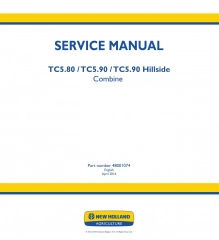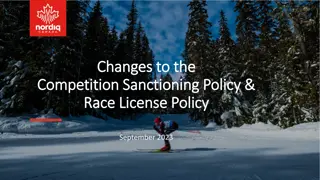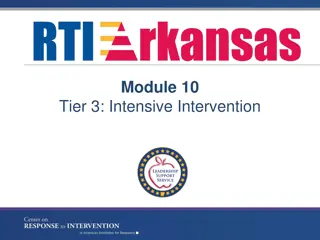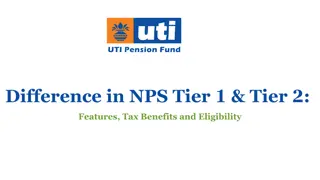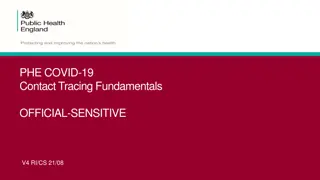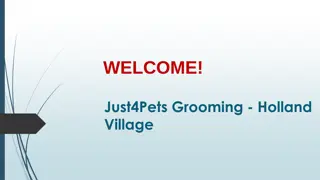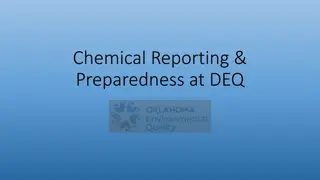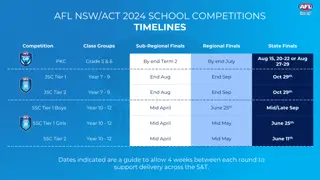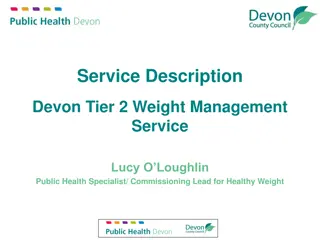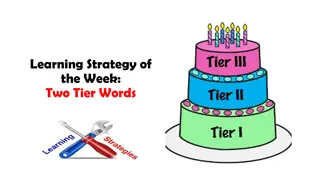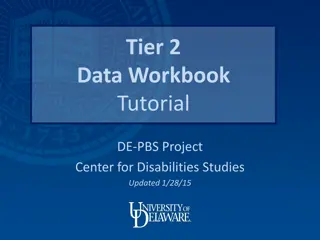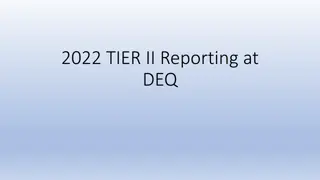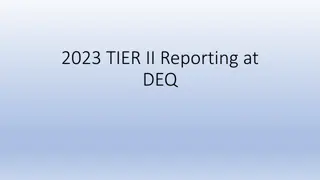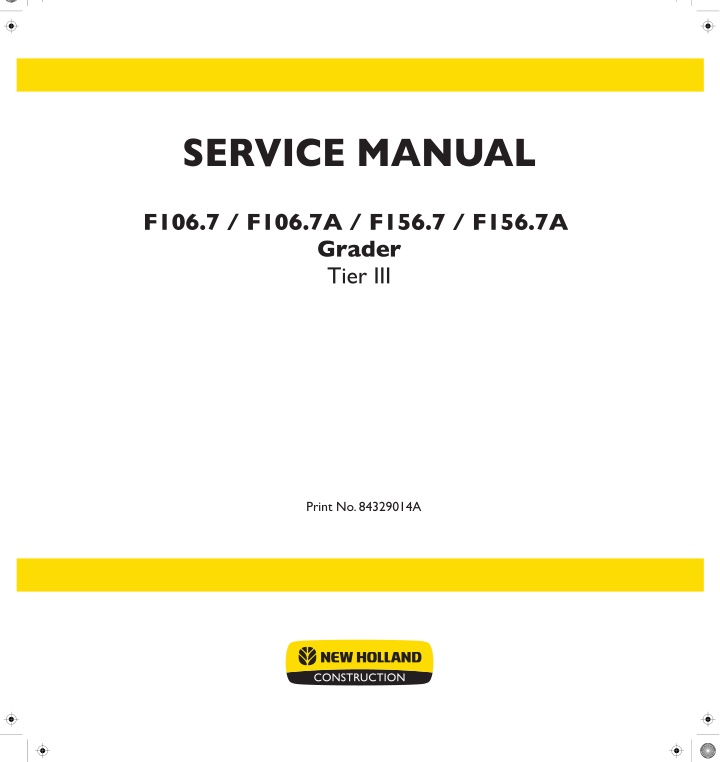
NEW HOLLAND F156.7A TIER 3 GRADER Service Repair Manual Instant Download
NEW HOLLAND F156.7A TIER 3 GRADER Service Repair Manual Instant Download
Download Presentation

Please find below an Image/Link to download the presentation.
The content on the website is provided AS IS for your information and personal use only. It may not be sold, licensed, or shared on other websites without obtaining consent from the author. If you encounter any issues during the download, it is possible that the publisher has removed the file from their server.
You are allowed to download the files provided on this website for personal or commercial use, subject to the condition that they are used lawfully. All files are the property of their respective owners.
The content on the website is provided AS IS for your information and personal use only. It may not be sold, licensed, or shared on other websites without obtaining consent from the author.
E N D
Presentation Transcript
SERVICEMANUAL F106.7 / F106.7A / F156.7 / F156.7A Grader Tier III Print No. 84329014A
Repair manual Grader F106.7 / F106.7A F156.7 / F156.7A 2010 CNH Baumaschinen GmbH Printed in Germany 84329014A Edition 07-2010
CNH Baumaschinen GmbH THE REPRINTING OR COPYING OF THIS REPAIR MANUAL EITHER WHOLELY OR PARTIALLY, REQUIRES PERMISSION IN WRITING FROM THE PUBLISHER The information contained in these instructions are related to the time at which the manual is published. As we are constantly striving to improve our products and make additional options available, modifications may be made which affect the procedures described in these repair instructions. If you find descriptions or information that differ from your product, please contact your dealer.
REPAIR INSTRUCTIONS FOREWORD F106.7 / F106.7A F156.7 / F156.7A TO THE READER This repair manual is intended for professional repair technicians. information, needed for carrying out specialised repair work. Please read carefully through the repair manual, and also the operating instructions, before undertaking any repair work. Even if you are already familiar with the technology used in graders, please use this repair manual, but also use the operating instructions and parts catalogue for reference and guidance. The repair manual will allow the experienced construction machine mechanic to carry out the necessary repair work correctly. mechanical assembly: technical regarding the operation of essential systems and equipment; information about performance tests on the machine; troubleshooting and information for identifying faults on the machine; technical information necessary for repair operations on the machine, the equipment necessary for carrying out repairs, information about maintenance standards, procedures for removal/installation and for disassembly/ assembly. You can use the list of contents to find the necessary information easily. The illustrations are partially simplified to make them more easily understood. Although it may result in apparent differences with your particular grader model, this is intended to make the information clearer. description and information It contains important USE This repair manual refers to the machine version originally supplied. It does not describe any attachments that may be added or modifications that may be made at a later time. The repair manual contains information: Safety information Technical data and special tools Function description Performance test Troubleshooting and fault correction Repair instructions The Safety Instructions section describes the recommended procedures for preventing the risk of injuries to the operator and the personnel responsible for maintaining and working on the machine. The Specifications section contains service data, conversion tables and lists of special tools and maintenance materials required. The other sections contain the following the following REPAIR Carry out the required repair operations as soon as possible. Doing so will reduce repair costs and increase the availability of your grader. In all repair work, always follow the instructions in the workshop manual and operating instructions. Customer service will be pleased to assist you with a considerable number of work operations not described in the workshop manual. Always use only original replacement parts. FURTHER REFERENCE MATERIAL In addition to the present manual, please also refer to the following documentation: Operators Manual Parts catalogue information for each Edition 07-2010 84329014A 1
https://www.ebooklibonline.com Hello dear friend! Thank you very much for reading. Enter the link into your browser. The full manual is available for immediate download. https://www.ebooklibonline.com
REPAIR INSTRUCTIONS OVERVIEW OF CHAPTERS F106.7 / F106.7A F156.7 / F156.7A OVERVIEW OF CHAPTERS SAFETY INFORMATION 1 SPECIFICATIONS 2 ENGINE 3 TRANSMISSION 4 REAR AXLE 5 FRONT AXLE 6 EQUIPMENT 7 HYDRAULIC SYSTEM 8 BRAKES 9 STEERING SYSTEM 10 ELECTRICAL SYSTEM 11 CAB AND CAB FLOOR 12 Edition 07-2010 84329014A 1
Chapter 1 1 SAFETY INFORMATION CNH Baumaschinen GmbH Product documentation 13581 Berlin, Staakener Str. 53-63 84329014A 2010 CNH Baumaschinen GmbH July 2010
REPAIR INSTRUCTIONS SAFETY INFORMATION F106.7 / F106.7A F156.7 / F156.7A CHAPTER 1 TABLE OF CONTENTS 1 1.1 1.2 1.3 1.4 1.5 1.6 GRUNDLEGENDE SICHERHEITSHINWEISE ...................................................1-3 Warnhinweise und Symbole ..........................................................................................................1-3 Intended use ..................................................................................................................................1-3 Organizational procedures .............................................................................................................1-4 Personnel selection and qualifications - basic responsibilities ......................................................1-5 Safety information for specific phases of operation........................................................................1-6 Special operations when using the machine, servicing and fault repair work as part of working procedure, waste disposal..............................................................................................................1-7 Notes on special types of hazard....................................................................................................1-8 Electrical energy.............................................................................................................................1-8 Gas, dust, vapour, smoke ..............................................................................................................1-8 Hydraulic, pneumatic system..........................................................................................................1-8 Noise ..............................................................................................................................................1-8 Oil, grease and other chemical substances ...................................................................................1-8 Transport, towing and restarting ....................................................................................................1-9 WARNING AND INSTRUCTION PLATES ........................................................1-10 Left side of vehicle .......................................................................................................................1-10 Right side of vehicle .....................................................................................................................1-12 OPERATION .....................................................................................................1-15 General information .....................................................................................................................1-15 Fuelling ........................................................................................................................................1-17 Fuelling system (optional) ............................................................................................................1-18 Driving ..........................................................................................................................................1-19 Machine recovery / towing ...........................................................................................................1-21 Towing device...............................................................................................................................1-21 Transport .....................................................................................................................................1-21 Crane loading ..............................................................................................................................1-21 Work operations ...........................................................................................................................1-22 Using the grader ..........................................................................................................................1-22 Attachments .................................................................................................................................1-23 SECURING THE MACHINE ........................................................................................................1-24 INSPECTION AND MAINTENANCE ................................................................1-25 General information .....................................................................................................................1-25 Fuel system .................................................................................................................................1-29 Electrical system ..........................................................................................................................1-30 Before working on the electrical system ......................................................................................1-30 Alternator .....................................................................................................................................1-30 Power relay (K10.1), start relay (K1.5) and grid heater power relay (K1.7) .................................1-31 Power shift transmission ..............................................................................................................1-31 Hydraulic system .........................................................................................................................1-31 Brakes ..........................................................................................................................................1-32 Wheels and tyres .........................................................................................................................1-33 Air conditioning (optional) ............................................................................................................1-35 Repair ..........................................................................................................................................1-36 PROTECTING ELECTRONIC UNITS DURING WELDING WORK .................1-38 1.7 1.7.1 1.7.2 1.7.3 1.7.4 1.7.5 1.8 2 2.1 2.2 3 3.1 3.2 3.3 3.4 3.5 3.5.1 3.5.2 3.5.3 3.6 3.7 3.8 3.9 4 4.1 4.2 4.3 4.3.1 4.3.2 4.3.3 4.4 4.5 4.6 4.7 4.8 4.9 5 Edition 07-2010 84329014A 1 - 1
REPAIR INSTRUCTIONS SAFETY INFORMATION F106.7 / F106.7A F156.7 / F156.7A 5.1 5.1.1 5.1.2 5.1.3 5.1.4 5.1.5 6 6.1 6.2 6.3 Disconnect the connectors of the electronic units .......................................................................1-38 Transmission control EST37A (XA1) and front wheel drive control FWD (XA8.1) ..................1-38 AIC connections ...........................................................................................................................1-39 Engine control ..............................................................................................................................1-39 Cab connector .............................................................................................................................1-40 Alternator connector ....................................................................................................................1-40 VACUUM PUMP ................................................................................................1-41 General information .....................................................................................................................1-41 Scope of supply ...........................................................................................................................1-41 Connecting the vacuum pump .....................................................................................................1-41 1 - 2 84329014A Edition 07-2010
REPAIR INSTRUCTIONS SAFETY INFORMATION F106.7 / F106.7A F156.7 / F156.7A 1 BASIC SAFETY INFORMATION 1.1 Warning notes and symbols Only implements approved by CNH Baumaschinen should be used. The following symbols are used in the operating instructions to indicate particularly important information: No extensions or conversions may be made to units supplied. Only implements approved by CNH Baumaschinen should be used. ATTENTION: Safety rules and procedures, designed to protect the driver and others from mortal dangers or injuries, and to prevent serious damage to property. Proper use of the machine also means following the operating instructions and applying the inspection and maintenance conditions. Using the grader for any other purpose, for example: carrying passengers, as a working platform, towing or carrying loads without using the proper attachments, is considered improper use. Improper use of the machine can present a mortal danger to operating personnel and others, and may cause physical injuries or extensive damage to property. NOTE: Notes and precautions to avoid damage to machinery and property. 1.2 Proper use This machine is constructed according to the recognized mechanical safety regulations, and using state-of-the-art technology. Nevertheless, when in operation, situations can occur that present serious or mortal dangers to the operator and others, or risks of damage to the machine and other property. The machine should be used only if it is in proper operating condition, and only by operators who are aware of the dangers, know the safety procedures, and have read the operating instructions! The important notes are placed at the start of this section. Immediately repair any faults (or have them repaired) if these could have a prejudicial effect on safety. The manufacturer/supplier will not be liable for any damage resulting from improper use. In this case, the user alone will be responsible. Noise emission data as stated in statutory order 3 pursuant to Equipment Safety Law of 18/01/1991 or EC Machinery Directive 89/392/EWG. This Grader is principally designed for: Creating a finish grade surface Clearing top soils Scarifying old road surfaces and hard ground Cutting embankments Clearing ice and snow Placing, spreading, mixing, and compressing materials. Using earth-moving equipment properly, with driver seats that meet standard ISO 7096, 2008 EM 4 Class < 1.1 as described in ISO 7096:2008 Table 1, will ensure that the measured vibration frequencies (measured as described in ISO 2631 Part 1) meet the requirements regarding protection from whole- body vibrations. The Grader can also be used in conjunction with other attachments for special applications. The Specifications provide clear information on this subject. Edition 07-2010 84329014A 1 - 3
REPAIR INSTRUCTIONS SAFETY INFORMATION F106.7 / F106.7A F156.7 / F156.7A 1.3 Organizational procedures Check that all safety information and warning notices at or on the machine remain fully and clearly legible! Keep the operating instructions stored at the location where the machine is used, and in a place where they can be easily accessed, for example in the holder provided! If there are any changes that affect safety or the operating behaviour of the machine, stop the machine immediately and inform the person or department responsible! In addition to the operating instructions, follow and draw attention to the general legal regulations and other obligatory requirements regarding accident prevention and environmental protection! No modifications, conversions or retrofits that might affect safety must be made to the machine without the approval of the supplier! This also applies to the installation or re-adjustment of safety devices and valves, or welding work on load-bearing parts. These obligations and requirements may also apply to the handling of dangerous goods, the providing and wearing of personal protective equipment, or road traffic regulations. Replacement parts must meet the technical requirements stated by the manufacturer. This can be ensured by always using original replacement parts. Supplement additional instructions, including supervision and reporting requirements, in order to take account of the specific operating conditions, for example in relation to work planning, work procedures, and the personnel employed. the operating instructions with Replace hydraulic hoses at the stated or appropriate intervals, even if no defects affecting safety are visible. Before starting work, personnel appointed to carry out work on the machine must have read the operating instructions, and particularly the Safety Information section. It will be too late to do this once the actual work has begun. This particularly applies to personnel who only work occasionally on the machine, e.g. for the purpose of setting up or maintenance. Carry out periodic checks / inspections at the intervals specified by regulations or in the operating instructions! When maintenance work is being carried out, fire extinguishers and their operating instructions must be displayed at a suitable place! Pay attention to fire detection and firefighting devices! You must check, at least occasionally, that personnel can demonstrate safety and risk awareness, while following instructions! the operating Loose or long hair must be tied up, and personnel must not wear loose clothing or jewellery, including rings. These cause a risk of injury, as they may be caught up or pulled into the machine. Where necessary, or when specified by the regulations, personal protective equipment must be worn! Pay attention to the safety information and warning notices on the machine! 1 - 4 84329014A Edition 07-2010
REPAIR INSTRUCTIONS SAFETY INFORMATION F106.7 / F106.7A F156.7 / F156.7A 1.4 Personnel selection and qualifications - basic responsibilities Work on the machine's electrical equipment should only be carried out by a qualified electrician, or a trained technician under the supervision and guidance of a qualified electrician, in accordance with the electrical regulations. Only trained and reliable personnel should be allowed to work on or with the machine. Apply the minimum age required by law! Work on the chassis and suspension, and the brake and steering systems should only be carried out by personnel trained for this purpose! Only use personnel who have been suitably trained or instructed, and clearly set out the responsibilities assigned for operating, setting up, maintenance, and repair! Only personnel with the necessary skills and experience should be allowed to work on the hydraulics! Ensure that only the personnel appointed for the task concerned is allowed to work on or with the machine! Define the responsibilities of the driver (also in relation to road traffic regulations) and authorize him/her to reject third-party instructions that would lead to a breach of safety regulations! Personnel being trained, instructed or briefed, or persons undergoing general training, must only be allowed to work on or with the machine if they are kept under constant supervision by an experienced person! Edition 07-2010 84329014A 1 - 5
REPAIR INSTRUCTIONS SAFETY INFORMATION F106.7 / F106.7A F156.7 / F156.7A 1.5 Safety information for specific phases of operation Before starting work / moving off, check whether the brake, steering, lighting and signalling systems are operational! Normal Mode Refrain from any working methods that might be prejudicial to safety! Before moving off, always check that attachments are secured to prevent accidents! Before starting work, familiarize yourself with the particular working environment at the location concerned. This may concern obstacles in the work/ traffic area, the load-bearing capacity of the ground, and safety barriers necessary to close off the worksite from public traffic areas. If driving the machine on public roads, streets, or other areas, follow the road traffic regulations and, if necessary, bring the machine into a condition that complies with these regulations. In conditions of poor visibility or when dark, always switch on the vehicle lights! Take steps to ensure that the machine is only operated when in a safe and operating condition! Passengers should only sit in the passenger seats provided for this purpose. Only operate the machine if all protection devices and safety-related equipment, e.g. removable guards, emergency shut-off insulation, and extractor systems, are present and in functional condition. When passing through underpasses and tunnels, and under bridges or under overhead lines etc., always ensure that there is sufficient headroom! devices, noise The machine must be inspected at least once in each shift for visible damage and defects! Any changes that occur (including changes in operating behaviour) must be reported immediately to the department or person responsible! Stop the machine immediately and secure it! Always keep at a sufficient distance from the edges of trenches and embankments! Do not use any working methods that might endanger the stability of the machine! If there is a malfunction, stop the machine immediately and secure it! Faults must be repaired immediately! Do not drive with overhead attachments placed in a transverse position; always drive with attachments and loads lowered and near the ground, especially when driving uphill/downhill! Start the machine only from the driver's position! When on a gradient, always adapt vehicle speed to the particular conditions! Always shift to the lower gear range before coming to the gradient, never while driving on it! During switch-on/switch-off, pay attention to the control display as explained in the operating instructions! Before leaving the driver's seat, always secure the machine to prevent it moving off accidentally, and to prevent access by unauthorized persons! Switch off the engine! Before starting up the machine, ensure that no one will be at risk when the machine is started! 1 - 6 84329014A Edition 07-2010
REPAIR INSTRUCTIONS SAFETY INFORMATION F106.7 / F106.7A F156.7 / F156.7A 1.6 Special operations when using the machine, fault repair work and troubleshooting as part of working procedure, waste disposal For assembly work carried out above body height, use the appropriate safety hoists and work platforms provided for this purpose. Do not use machine parts as climbing aids! For maintenance work at greater heights, wear fall- protection! Apply the intervals specified in the operating instructions for adjustment, maintenance, and inspection tasks, and pay attention to the information and scheduled replacement of parts and equipment components! These tasks should only be carried out by qualified personnel! Keep all handles, steps, guard rails, landings, platforms and ladders clear of dirt, snow and ice! times for the At the start of maintenance/repair work, clean any oil, fuel, or operating fluids from the machine, and particularly away from screw connections or other connections! Do not use aggressive cleaning agents! Use fibre-free cleaning cloths! Inform the operating personnel before starting special or repair operations! Appoint supervisors! When carrying out any tasks related to the operating, retrofitting or adjusting of the machine and its safety devices, and to maintenance, inspection or repair work, follow the switch-on/ switch-off procedures described in the operating instructions and the notes concerning repair operations! If cleaning the machine using water or a steam jet (high-pressure cleaner) equipment, seal off or cover all openings where water/steam/cleaning agents should not be allowed to enter for safety or functional reasons. Electric motors and switching cabinets are particularly at risk. or other cleaning Whenever required, seal off the repair area, leaving plenty of room! When carrying out cleaning work, ensure that heat sensors connected to extinguishing systems cannot come into contact with hot cleaning fluids. These might trigger the fire extinguishing system. fire detection and If the machine is switched off completely for maintenance and repair work, it must be secured to prevent it being switched on accidentally: Take out the key and attach a warning sign. After cleaning, remove all covers and sealing plugs completely! After cleaning all fuel, engine oil, brake fluid, and hydraulic fluid pipes, examine them for leaks, loose connections, chafe marks and damage! Repair any defects immediately! Only carry out maintenance and repair work when the machine is parked on a level and sufficiently stable surface, and secured to prevent it moving off or buckling! When carrying out maintenance and repair work, always tighten any loose screw connections! When being replaced, individual components and major assemblies should be carefully fastened and secured to the lifting gear. Only use suitable and correctly functioning lifting gear and load-handling equipment, with sufficient load capacity! Do not stand or work under suspended loads! If safety devices have to be removed for setting-up, maintenance and repair work, these should be put back in place immediately and inspected when the maintenance/repair work is completed. Only appoint experienced persons to attach loads and instruct crane drivers! Instructors must stand where they are visible to the operator, or be in contact with him by voice communications. Dispose of operating fluids, auxiliary products and replacement parts safely, and without damage to the environment! Edition 07-2010 84329014A 1 - 7
REPAIR INSTRUCTIONS SAFETY INFORMATION F106.7 / F106.7A F156.7 / F156.7A 1.7 Notes on special types of hazard 1.7.3 Hydraulics, pneumatic system Regularly inspect all pipes, hoses, and screw connections for leaks and visible damage! Repair any damage immediately! Spurting oil can cause burns and other injuries. 1.7.1 Electrical energy Use only original fuses with the correct current rating! Switch the machine off immediately if there are faults in the electrical system! Before starting repair work, any system blocks and pressure lines (hydraulic, compressed air) that are to be opened must first be depressurized as indicated in the descriptions of the assemblies! Keep the machine at a sufficient distance from overhead power lines! If working close to overhead power lines, keep the equipment away from the lines. Danger of death! Find out the required safety clearances! Hydraulic and compressed air lines must be correctly laid out and assembled! Do not get the connections mixed up! If contact is made with high-voltage lines: Do not leave the machine; Drive the machine out of the danger area; Warn persons on the ground not to come near, or to touch the machine; Have the voltage switched off; Only leave the machine when the contacted/ damaged power line has been safely de- energized! The machine's electrical equipment should be regularly inspected. Faults connections or charred cables must be corrected immediately. Hose fittings, length and quality must meet the requirements. 1.7.4 Noise Noise insulation devices must be in the protection position during operation. Wear the prescribed personal ear protection! 1.7.5 Oil, grease and other chemical substances such as loose If handling oil, grease or other chemical substances, follow the safety instructions for the product concerned! Be careful when handling hot operating fluids and auxiliary materials (risk of burns and scalding). 1.7.2 Gas, dust, vapour, smoke Only operate combustion engines and fuel-driven heaters in well-ventilated areas! If using the equipment in an enclosed space, ensure there is sufficient ventilation before starting! Follow the local regulations applying at the worksite! Only carry out welding, firing, or grinding work on the machine if this has been explicitly approved - these bring risks of fire and explosion. Before carrying out welding, firing or grinding work, clean away dust and combustible materials from the machine and its surroundings, and provide adequate ventilation (risk of explosion)! 1 - 8 84329014A Edition 07-2010
REPAIR INSTRUCTIONS SAFETY INFORMATION F106.7 / F106.7A F156.7 / F156.7A 1.8 Transport, towing and restarting Only use suitable means of transport and lifting gear, with sufficient load-carrying capacity! Towing, loading and transporting should be carried out only as described in the operating instructions! When restarting, follow only the procedure described in the operating instructions! If towing, use the specified transport position, and keep to the permitted speed and distance! Edition 07-2010 84329014A 1 - 9
REPAIR INSTRUCTIONS SAFETY INFORMATION F106.7 / F106.7A F156.7 / F156.7A 2 WARNING SIGNS AND INSTRUCTION PLATES 2.1 Left side of vehicle 1 - 10 84329014A Edition 07-2010
Suggest: If the above button click is invalid. Please download this document first, and then click the above link to download the complete manual. Thank you so much for reading
REPAIR INSTRUCTIONS SAFETY INFORMATION F106.7 / F106.7A F156.7 / F156.7A ATTENTION: Read the warning signs and instruction plates on the machine. Keep these signs and plates clean and legible. Replace these plates immediately if they are no longer legible. New warning signs and instruction plates can be obtained from the spare parts department. When ordering, part numbers can be found on the replacement parts lists for the machine. Legend for left side of vehicle Read the operating instructions Do not start up the machine before you have read and understood the operating instructions. Equipment can be secured here to prevent accidental operation. Risk of injury due to hot or rotating parts in the engine compartment. Only open the engine compartment cover when the engine has stopped. Risk of injury due to unauthorized starting of the machine. Before working on the machine, switch off the engine and remove the key. This plate indicates the maximum speed permitted on public roads. 10. Permitted lifting points for crane loading. 1. Risk of injury due to hot or pressurized hydraulic fluid. Follow the operating instructions. 12. Risk of injury by crushing. Do not start up the machine if anyone is near the articulated joint. Risk of injury by crushing. Do not start up the machine if anyone is standing between the machine and an adjoining barrier. 15. Noise emissions plate. LWA indicates the level of noise emissions in dBA (as stated in EC standard 2000/41/EG). 16. Windscreen washer system. Water can be added here for the windscreen washer system. 18. Permitted anchoring points for loading. 19. Risk of injury. Never jump off the machine. Always wear a safety belt. 20. Bonnet release. The bonnet can be released from the cab using the Bowden cable. 1. 2. 4. 7. 9. Edition 07-2010 84329014A 1 - 11
https://www.ebooklibonline.com Hello dear friend! Thank you very much for reading. Enter the link into your browser. The full manual is available for immediate download. https://www.ebooklibonline.com

